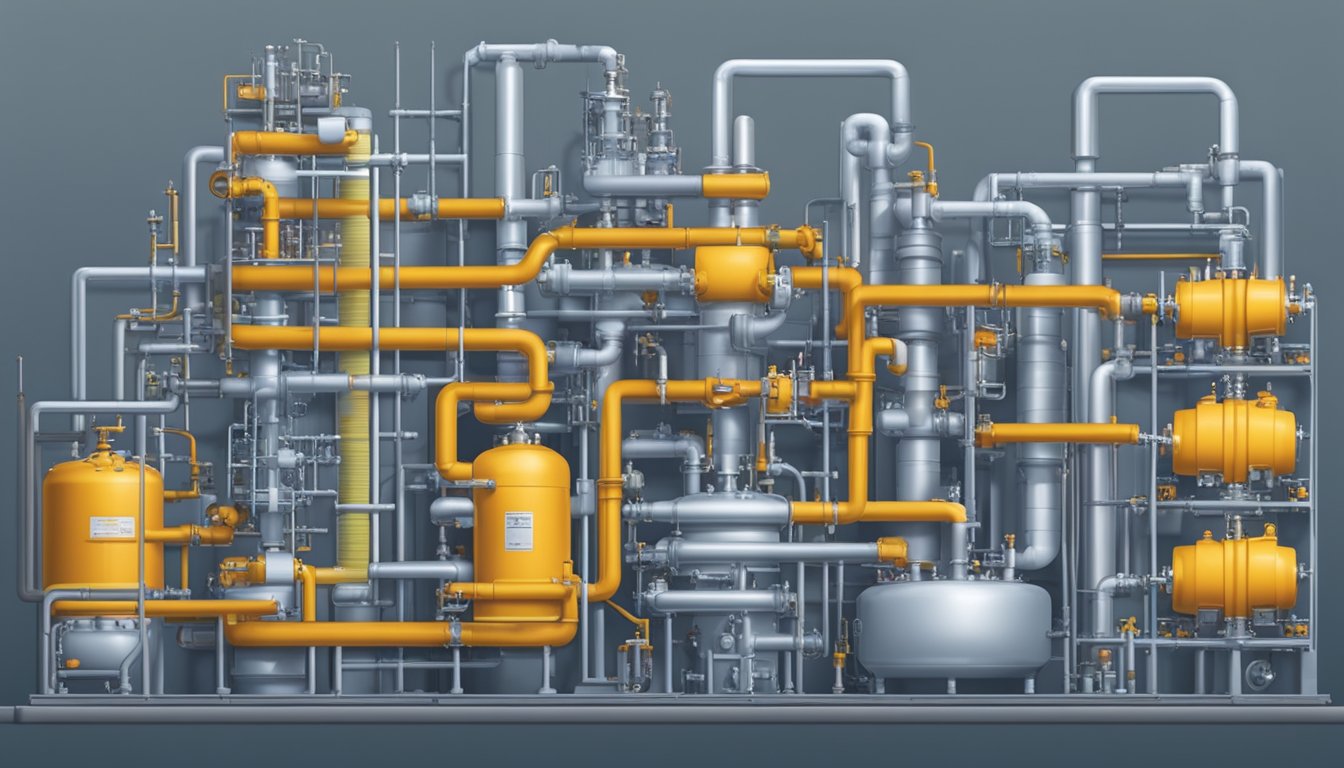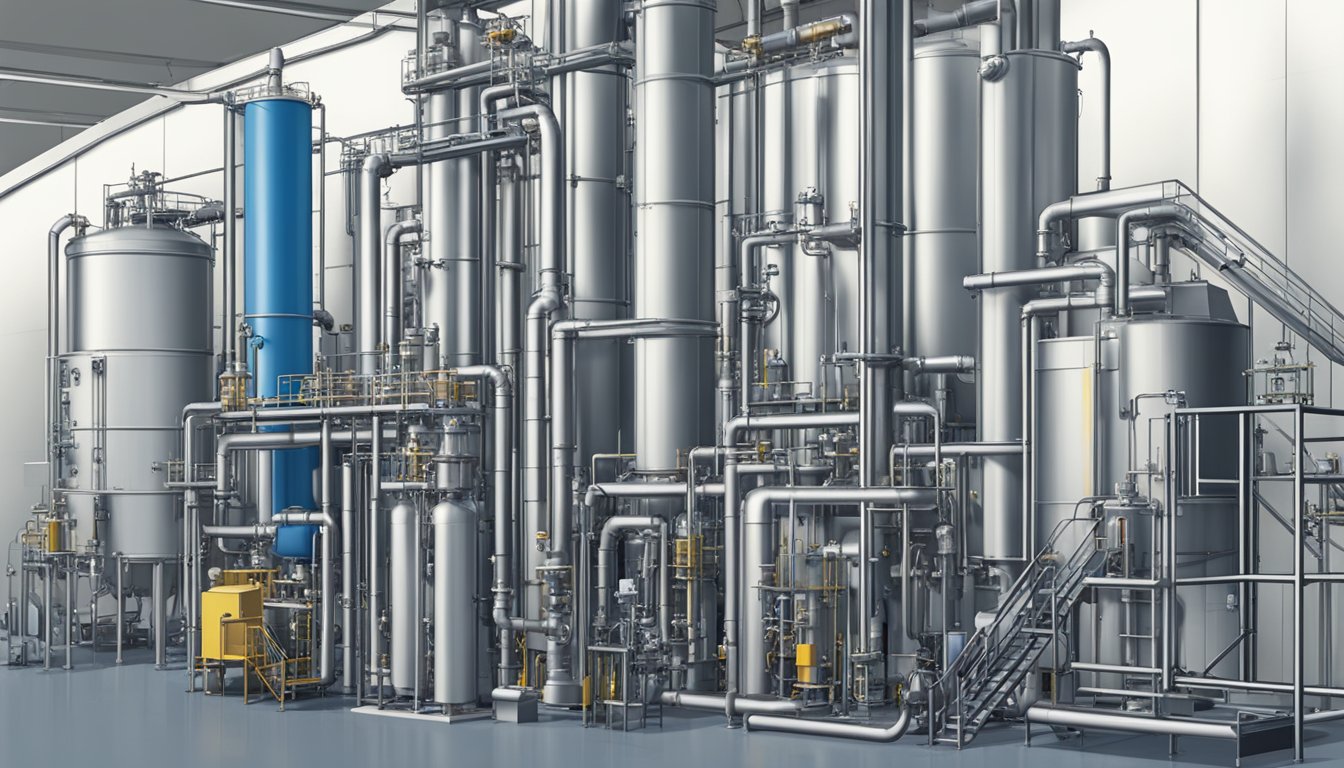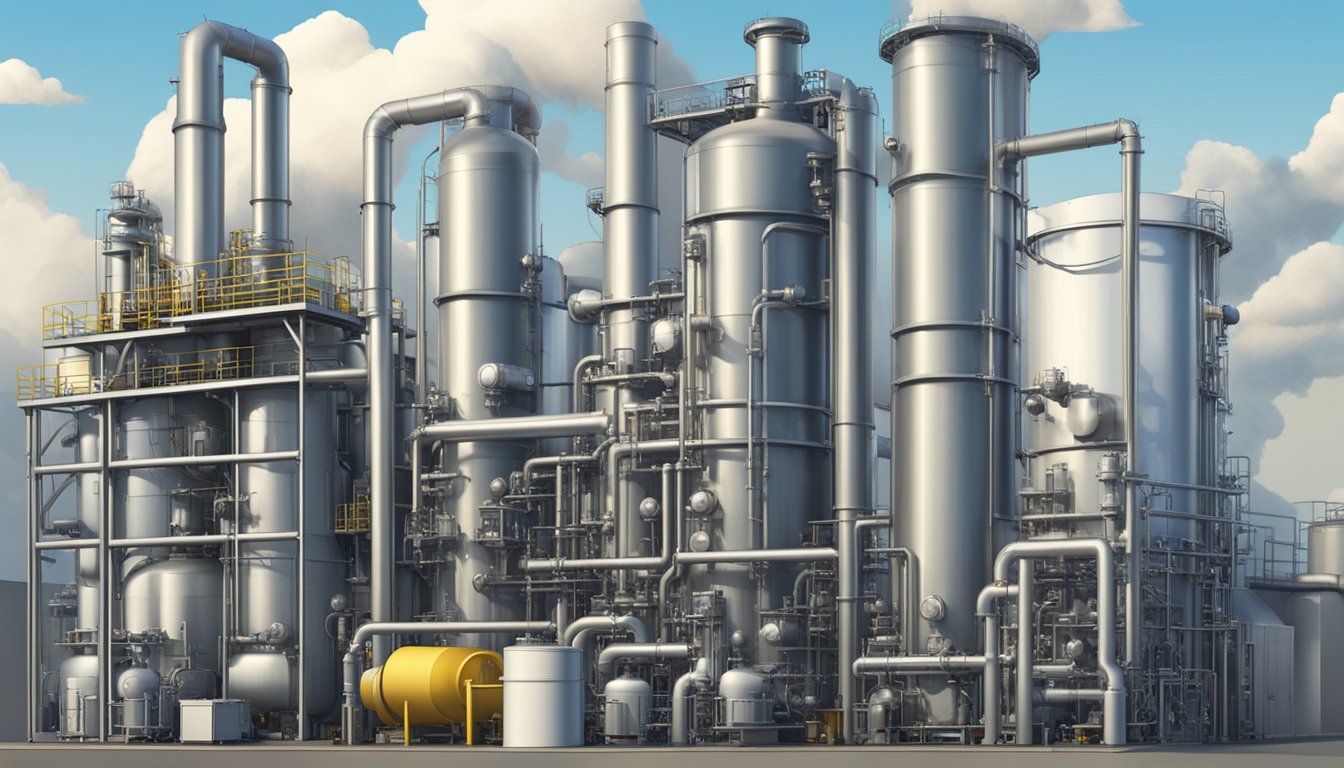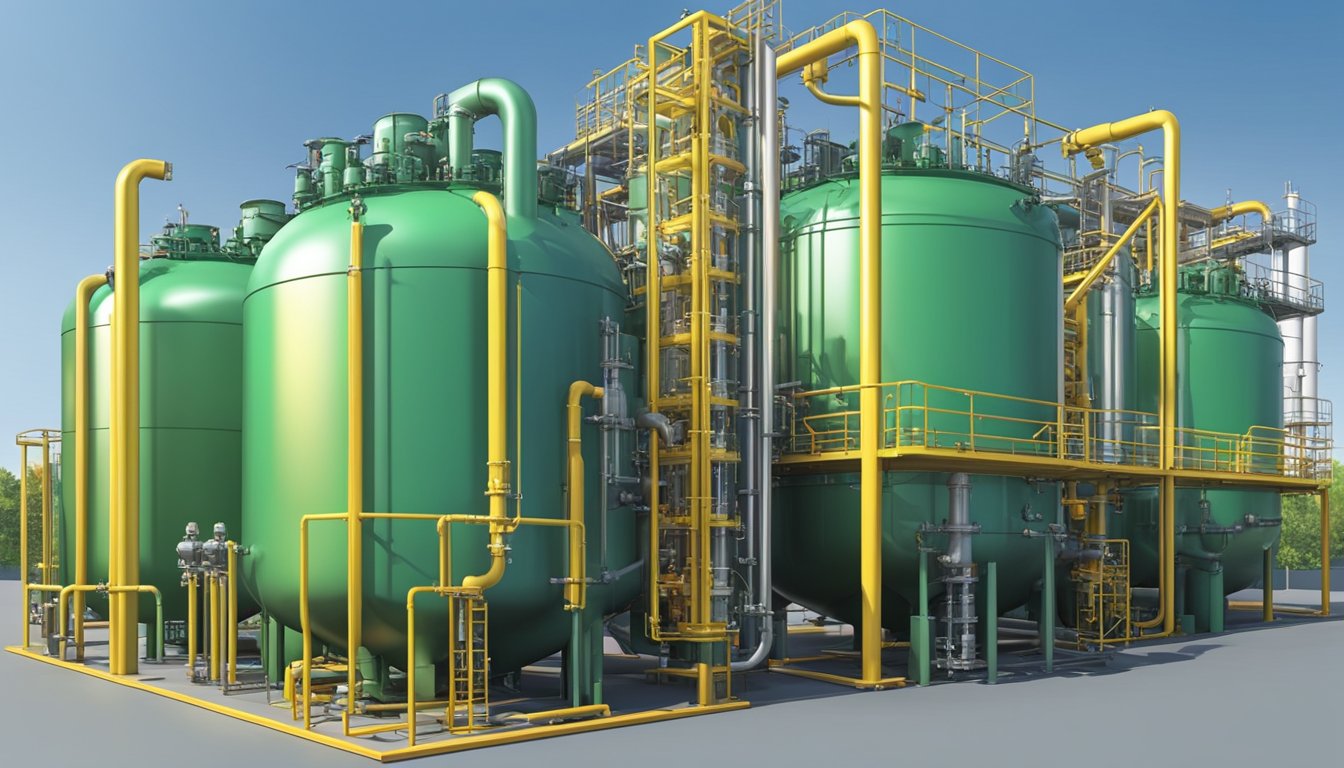Butyl Rubber Synthesis: A Comprehensive Overview
20/01/2024
Butyl Rubber Synthesis is a synthetic rubber that has become increasingly popular in a variety of applications due to its unique properties. It is a copolymer of isobutylene with isoprene and is commonly abbreviated as IIR. Butyl rubber is a type of elastomer that is known for its excellent air retention, gas impermeability, and chemical resistance.

The synthesis of butyl rubber involves the polymerization of isobutylene with a small amount of isoprene. The process typically involves the use of a catalyst, such as aluminum trichloride, to initiate the reaction. The resulting polymer is a high molecular weight compound that is characterized by its high degree of branching and low unsaturation. The properties of butyl rubber can be modified by adjusting the amount of isoprene used in the synthesis process.
Overall, the synthesis of butyl rubber is a complex process that requires careful control of reaction conditions to produce a high-quality product. The resulting material has a wide range of applications in various industries, including automotive, construction, and healthcare.
Butyl Rubber Fundamentals

Chemical Structure
Butyl rubber is a type of synthetic rubber that is made up of a copolymer of isobutylene and isoprene. The chemical structure of butyl rubber is unique in that it has a high percentage of methyl groups (CH3) attached to the polymer chain. This makes the polymer chain more flexible and less susceptible to degradation from heat, oxygen, and ozone.
Properties and Characteristics
Butyl rubber has a number of unique properties and characteristics that make it useful in a wide range of applications. For example, it has excellent impermeability to gases and liquids, making it ideal for use in the production of inner tubes for tires, as well as for sealing materials in the construction industry.
Another important characteristic of butyl rubber is its low compression set, which means that it can maintain its shape and elasticity even after being subjected to high levels of compression. This makes it useful for applications where a high degree of resilience is required, such as in the production of shock absorbers and vibration dampers.
Butyl rubber is also resistant to a wide range of chemicals, including acids, alkalis, and some organic solvents. This makes it useful for applications where exposure to harsh chemicals is expected, such as in the production of chemical-resistant gloves and protective clothing.
Overall, butyl rubber is a versatile and durable material that has a wide range of applications in industries such as automotive, construction, and healthcare. Its unique properties and characteristics make it an ideal choice for applications where impermeability, resilience, and chemical resistance are required.
Raw Materials

Isobutylene
Isobutylene is the primary raw material used in the production of butyl rubber. It is a colorless gas with a faint sweet odor. Isobutylene is produced by cracking crude oil or natural gas liquids. The purity of isobutylene is critical to the quality of the final product, and it is usually purified by distillation before being used in the polymerization process.
Isoprene
Isoprene is the secondary raw material used in the production of butyl rubber. It is a colorless liquid with a mild odor and is produced by the thermal cracking of hydrocarbons. Isoprene is typically added to isobutylene during the polymerization process to improve the elasticity and other mechanical properties of the final product.
Catalysts and Additives
The polymerization of isobutylene and isoprene is typically initiated by a catalyst, such as aluminum trichloride or boron trifluoride. The catalyst is usually added in small amounts to the reaction mixture to control the rate of polymerization and the molecular weight of the final product. Other additives, such as antioxidants and fillers, may also be added to the reaction mixture to improve the stability and other properties of the final product.
In summary, the production of butyl rubber requires high-purity isobutylene and isoprene, along with catalysts and other additives. The quality and purity of the raw materials, as well as the choice of catalysts and additives, can significantly affect the properties and performance of the final product.
Polymerization Process

Cationic Polymerization
Butyl rubber is synthesized via cationic polymerization, which involves the use of a cationic initiator to initiate the polymerization of monomers. The most commonly used cationic initiators for butyl rubber synthesis are Lewis acids, such as aluminum chloride (AlCl3), boron trifluoride (BF3), and their complexes with organic compounds. The cationic polymerization of butyl rubber is a step-growth polymerization process that involves the formation of a carbocation intermediate, which then reacts with another monomer molecule to form a longer polymer chain.
Reaction Conditions
The reaction conditions for butyl rubber synthesis via cationic polymerization are critical to the success of the process. The reaction is typically carried out in a solvent, such as hexane or heptane, at low temperatures (-100 to -80°C) to prevent the formation of unwanted side products. The monomer feed rate, initiator concentration, and reaction time are also important parameters that must be carefully controlled to achieve the desired molecular weight and properties of the polymer.
Post-Polymerization Modifications
After the polymerization process is complete, the resulting butyl rubber can be modified to improve its properties for specific applications. For example, the polymer can be hydrogenated to increase its thermal stability and resistance to oxidation, or it can be halogenated to improve its adhesion to other materials. The molecular weight of the polymer can also be controlled by adding a chain transfer agent during the polymerization process.
In summary, butyl rubber synthesis via cationic polymerization is a complex process that requires careful control of reaction conditions and post-polymerization modifications to achieve the desired properties of the polymer.
Product Processing
Mastication
After the butyl rubber is synthesized, it is typically subjected to a process called mastication. This process involves mechanical shearing of the rubber to break down the molecular chains and improve the flow properties of the material. Mastication can be done using a variety of equipment, including two-roll mills, internal mixers, and extruders. The choice of equipment depends on factors such as the desired level of mastication, the batch size, and the type of final product.
Shaping and Curing
Once the rubber has been masticated, it is ready for shaping and curing. Shaping involves molding the rubber into the desired shape, which can be done using a variety of techniques such as compression molding, transfer molding, and injection molding. The choice of molding technique depends on factors such as the complexity of the part, the desired level of precision, and the batch size.
After shaping, the rubber is cured to give it its final properties. Curing can be done using heat or chemical agents, depending on the type of rubber and the desired properties. For butyl rubber, the curing process typically involves heating the material to a temperature of around 160-180°C for several hours. During this time, the rubber undergoes a process called vulcanization, which involves the formation of crosslinks between the polymer chains. This gives the rubber its final properties, such as its strength, elasticity, and resistance to heat and chemicals.
Finishing
After curing, the rubber is typically subjected to a finishing process to remove any excess material and improve its surface properties. This can involve trimming, grinding, sanding, or polishing the rubber to achieve the desired finish. The choice of finishing technique depends on factors such as the type of final product, the desired level of precision, and the batch size.
Overall, the processing of butyl rubber is a complex and highly specialized process that requires careful attention to detail and a deep understanding of the material properties. With the right equipment and expertise, however, it is possible to produce high-quality butyl rubber products that meet the needs of a wide range of industries.
Applications of Butyl Rubber
Butyl rubber is a versatile material that finds application in various industries due to its unique properties. Here are some of the industries that use butyl rubber and how it is used.
Automotive Industry
Butyl rubber is a popular material in the automotive industry due to its excellent air retention properties. It is used for the inner lining of tires, preventing air from escaping and maintaining tire pressure. Butyl rubber is also used in the manufacture of shock absorbers, engine mounts, and gaskets.
Construction
Butyl rubber is used in the construction industry for waterproofing applications. It is an ideal material for sealing roofs, foundations, and other structures due to its excellent water resistance properties. Butyl rubber is also used in the manufacture of adhesives, sealants, and caulks.
Medical Products
Butyl rubber is used in the manufacture of medical products due to its low permeability to gases and liquids. It is used to make stoppers for vials, syringe plungers, and other medical devices that require a high degree of sealing. Butyl rubber is also used in the manufacture of gloves and other protective equipment.
Overall, butyl rubber is a highly versatile material that finds application in various industries due to its unique properties.
Quality Control and Standards
Quality control is a crucial aspect of butyl rubber synthesis. The production of butyl rubber involves several complex chemical reactions that must be carefully monitored to ensure the final product meets the desired specifications. Quality control procedures are designed to detect any deviations from the expected results and take corrective action to prevent further issues.
One of the main challenges in butyl rubber synthesis is the low-temperature reaction environment, which can be quite aggressive and corrosive. To achieve consistent quality, it is essential to maintain strict control over the reaction conditions, including temperature, pressure, and chemical composition. Any deviation from the optimal conditions can result in poor-quality rubber, which can lead to product failure or reduced performance.
To ensure the quality of butyl rubber, several standards have been established, including ASTM D1418 and ISO 1629. These standards define the physical and chemical properties of butyl rubber and provide guidelines for testing and quality control. Manufacturers must adhere to these standards to ensure that their products meet the required specifications.
In addition to these standards, manufacturers may also implement their own internal quality control procedures to ensure consistent product quality. These procedures may include regular testing of raw materials, intermediate products, and final products to ensure that they meet the required specifications. Manufacturers may also implement statistical process control techniques to monitor the production process and detect any deviations from the expected results.
Overall, quality control is a critical aspect of butyl rubber synthesis. By maintaining strict control over the reaction conditions and adhering to established standards, manufacturers can ensure that their products meet the required specifications and provide consistent performance.
Environmental Impact and Recycling
Butyl rubber synthesis has significant environmental impacts due to the extraction of crude oil and the energy-intensive manufacturing process. The production of butyl rubber requires a large amount of energy, which results in the emission of greenhouse gases and air pollutants. The mining of ores and the extraction of oil from the Earth’s crust, as well as the consumption of water resources, can also have a detrimental impact on the environment.
To mitigate these environmental impacts, recycling of butyl rubber is a viable option. Recycling can help conserve resources, reduce energy consumption, and decrease waste. Old inner tubes can be collected and processed for recycling. The energy balance for the recycling of butyl rubber bicycle inner tubes shows that recycling can save up to 64.0 MJ/kg of energy compared to the synthesis of new butyl rubber.
There are several methods for recycling butyl rubber, including mechanical, chemical, and thermal methods. Mechanical methods involve grinding and shredding the rubber into small pieces, which can then be used as a filler in other products. Chemical methods involve breaking down the rubber into its constituent parts using solvents or other chemicals. Thermal methods involve heating the rubber to high temperatures, which breaks down the rubber into its constituent parts.
While recycling of butyl rubber is a promising solution to reduce the environmental impact of butyl rubber synthesis, it is not without its challenges. Chemical degradation of the polymer must be avoided during recycling. Additionally, the recycling process can be energy-intensive, and the recycled rubber may not have the same properties as new rubber. However, with continued research and development, recycling of butyl rubber can become a more efficient and sustainable process.
Market Trends and Future Outlook
Butyl rubber is a synthetic rubber that has become increasingly popular in recent years due to its excellent gas impermeability and chemical resistance. The global butyl rubber market size was valued at USD 3.21 billion in 2022 and is expected to grow rapidly at a CAGR of 5.1% during the forecast period.
One of the primary drivers of the butyl rubber market is the increasing demand for automotive tires and tubes. Butyl rubber is used extensively in the manufacturing of tires and tubes due to its excellent air retention properties. The growth of the automotive industry in emerging economies such as China and India is expected to drive the demand for butyl rubber in the coming years.
Another important factor contributing to the growth of the butyl rubber market is the increasing demand for adhesives and sealants. Butyl rubber is widely used in the production of adhesives and sealants due to its excellent adhesion properties. The growth of the construction industry and the increasing demand for lightweight and energy-efficient materials are expected to drive the demand for butyl rubber in the production of adhesives and sealants.
The future outlook for the butyl rubber market is positive, with increasing demand expected from various end-use industries. However, the market is also facing several challenges such as the availability of raw materials and fluctuating prices of crude oil. To overcome these challenges, manufacturers are investing in research and development to develop new and innovative products with improved properties.
Overall, the butyl rubber market is expected to grow at a steady pace in the coming years, driven by the increasing demand from various end-use industries. Manufacturers are expected to focus on developing new and innovative products to meet the evolving needs of their customers.




